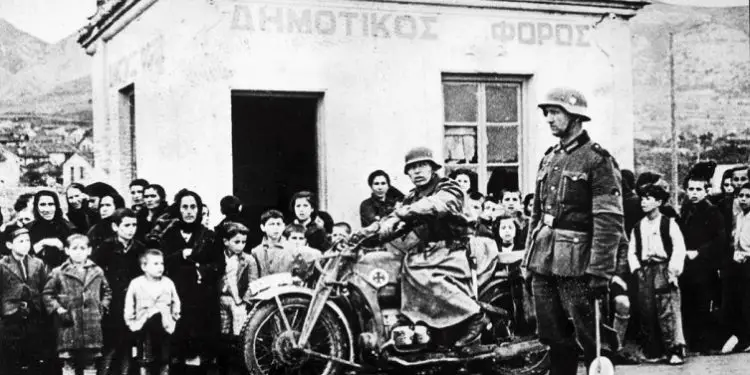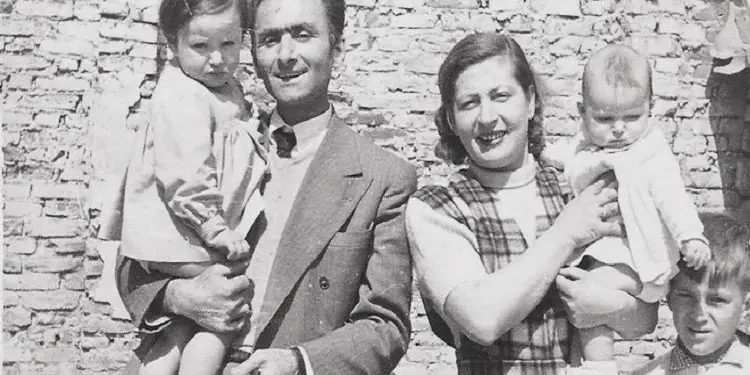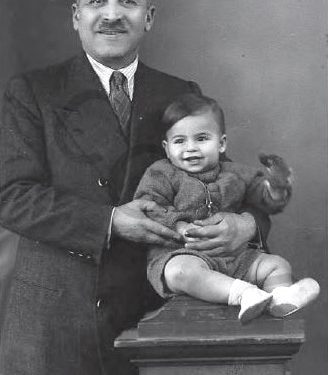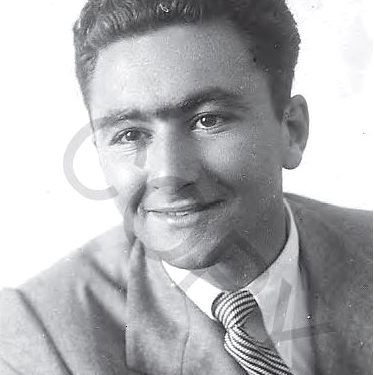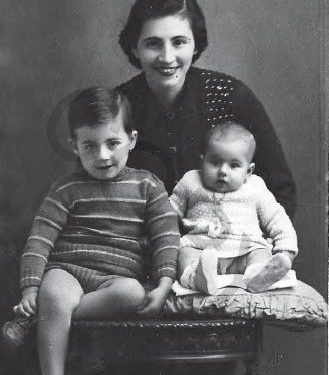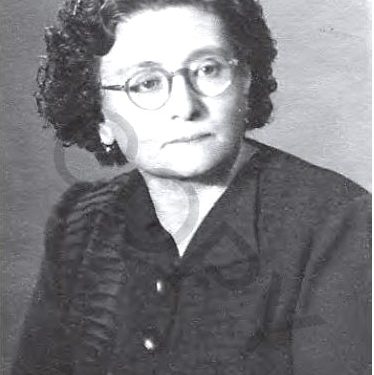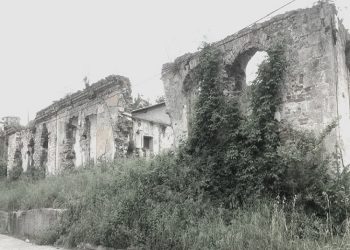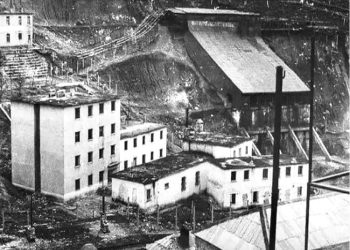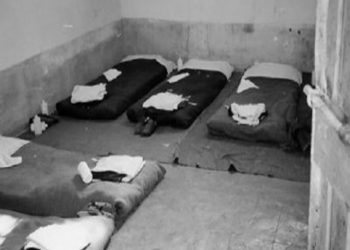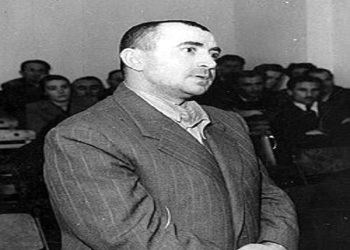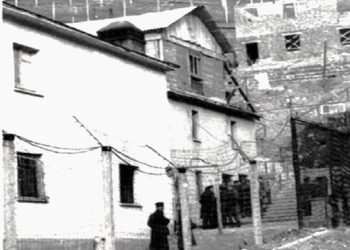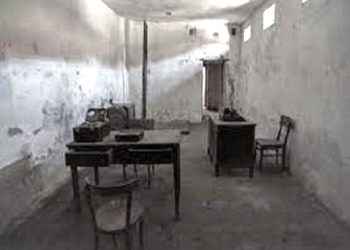By Josef Jakoel
The third part
-Chronicle of arrivals and the formation of communities-
Memorie.al / About the Israelis in Albania, there is little information about the period of time that extends from the beginning of the 18th century to the beginning of the 19th century. Isolated Israelis have come to Albania, but they have not taken root nor formed stable communities. In the “Avlona” entry of the Eshkol encyclopedia (Berlin 1929) it is said that Ali Pasha Tepelena, the Albanian ruler of Ioannina, had many Israelis in his council, but still the economic condition of the Israelis was low. Due to his persecutions, many Israelis escaped from Janina and settled in Avlona (Vlora), but Ali Pasha extended his power over Avlona as well. After this tyrant ruler was executed in 1822, these Israelis returned to Ioannina.) Professor Fejzi Hoxha writes that since 1839, an Austrian doctor, Doctor Auerbach, settled in Albania, who practiced medicine in Vlora, in in 1867, as a quarantine doctor. Later he went to Gjirokastra, where he worked until around 1881-1882.)
Continues from last issue
Young Israelis attended schools in the country, but there were those who went to study abroad. There were Israeli students attending schools in different cities of Greece, Italy, and even France, as well as some university students attending higher studies in various branches in these countries. In short, the Israeli community at that time enjoyed full rights in Albania, which were felt even more by those members of the Albanian Israeli community who studied in Greece and Italy, because in these countries racial discrimination had started even in the field of education, which later grew and culminated in the infamy of the Holocaust. This unprecedented genocide caused millions of Israeli victims, everywhere in Europe. On the map of Europe, only two countries stand out: Denmark with 77 victims among 7 thousand Jews, and Albania with 5 victims, among over 600 people (natives and immigrants who took refuge in Albania…)!
The friendly feelings of the Albanians were so strong, that later, in the middle of 1943, the former King Zog, who was in exile, thought of bringing to Albania after the liberation of the country, about 50,000 Israeli families, to live and to work together with the Albanian people, for the development of the country. In a meeting he had with a representative of the Anglo-Israeli committee, Zogu, after explaining that Albania was a rich country with a poor people, was ready to make 150 thousand ha available to the Israelis. Land, where about 50,000 families, or 200,000 people, could be settled. He had also promised that he would grant them: “full rights as Albanian citizens”. So strong was the sense of security that the Israelis nurtured in Albania, that they did not heed the warnings given to them by the immigrants who came fleeing from Nazi Germany, bringing with them the horrors of persecution, humiliation and dishonor that they were suffering from the Nazi beasts. . The life of the Israelis in Albania was peaceful and completely normal, as if what was happening in Europe belonged to another world, which had nothing in common with their lives.
From a religious point of view, the Israelites tried to keep their identity as pure as possible, respecting the rules and laws of the ancient tradition. In fact, in Albania, there was no city, not even Vlora, where the largest number of families lived, with a community in every sense of the word, centered around a synagogue. Consequently, there was not even a community organization, similar to others scattered around the world. People who had the opportunities and qualities for such a thing took care of the fortunes and progress of the Israelites. No one chose them, but they accepted them silently, because people were convinced that they were sincere and worked with flesh and soul for the well-being of the Israeli community. There was neither a school where the Hebrew language could be taught nor a yeshiva where religious rites could be taught. Since the first generation born in Vlora, most Israelis did not know how to read or recite the prayers in the Hebrew language, except for some who were inclined to do so. Among these, Moisi (Zino) Matathia stood out, who had studied and knew the Old Testament well, and knew how to recite the prayers, with a very sweet voice. Always considering Vlora, the identity of the Israelis of this city has been preserved by the recent arrivals, who had learned the language and rituals in the cities they came from (especially Ioannina), and this continued until the mid-30s.
In the cities of Gjirokastra and Delvina, traditions were kept more alive, because people had more frequent contact with Ioannina. Even in the early days, the dead were brought to Ioannina, in the ancient cemetery of that city, and this continued until 1935, when the young Samuel Menahem Jomtov died in Saranda, who was buried in Ioannina. But still, thanks to the tradition revived by the recent arrivals, it could be said that the main elements that made up the identity of the Israeli community were kept alive. One of the main commandments of the Jewish religious law is the strict observance of the Sabbath day of rest. Although this day recurs every week, the Sabbath is called the second celebration, because of its significance. The first place is occupied by the Great Day of Atonement, which is called Yom Kippur and is commemorated once a year. In Israeli families on Saturday, they waited with joy and preparation. On this day, it was not allowed to light a fire in the house, and therefore it was not possible to cook. That’s why our mothers and grandmothers used to cook on Friday. So Friday morning was dedicated to cooking, while the first hours of the afternoon, without any exception, brought the family members to wash and change their clothes, in order that the meeting with this holy day would find them chaste in body and soul. Then, when the first evening star rose on Friday, the celebration of the Sabbath began. Since fire was prohibited, it goes without saying that neither smoking nor the slightest commercial activity was allowed. Shops were kept closed. Songs were also sung that described how the “betrothed” was expected, “kalat shabbat”, as defined in the Jewish tradition, the sabbath, the day of rest, this holy day.
Religious law required that forgiveness begin as early as Friday afternoon. Except the Israelis, both in Vlora and in other Albanian cities did not have a synagogue (synagogue), so they gathered wherever they could. As far as I remember, in the early 1930s, the Matathia brothers finished building a large house and made available to the community two rooms on the ground floor that became one by opening the glass door that separated them one from the other. Those two rooms were enough to teach the men to pray, because according to custom, in the synagogue, women sit in special places, where the songs of prayers could be heard. It is known that every synagogue must be equipped with the book of laws, which in Hebrew is called; “Sefer Torah”. Once in the middle Ages, the community of Vlora had a synagogue and such books, but when the Israelis left there, the synagogue was abandoned and burned, and the “Sefer Toràja” was dug up in Ioannina, where it was known as the “Sefer Toràja” of Vlora. But now there was no Sefer Torà in any Israeli community in Albania. It was not difficult to find any specimen, because in Ioannina and Preveza, they were constantly writing and preparing such, but the obstacle was the lack of a synagogue, inside which there is a special place, called “The Ark of the Covenant”, where you must “Sefer Toràja” is preserved. Of course, the absence of the “Sefer Torà” deprived every ceremony of its most suggestive parts, but prayers were said anyway. When it was the turn of those prayers that required a certain number of people to be present (ten people or Minyan in Hebrew), old and young people came to participate. The old people laughed with their descendants when they heard the young people who, seriously, recited “amen” with a little delay, whenever they heard this word during prayers. They didn’t know what else to say…
This is how the marked day of Saturday passed, and rarely were those people or occasions that violated religious orders. As for the ceremonies in the intimacy of the family, among these we must not forget the pouring of a contribution for the redemption of the Land of Israel. In every Israeli home there was a box where family members would regularly pour their contribution to that fund. For the minors, this ceremony was eagerly awaited, because the father would take the child in his arms, put a coin in his hand if possible and teach him to throw it into the fund box with the star of David (Hebrew Keren Kajemeth le Israel), explaining to himself that this money would serve for the Promised Land. Once a year, in some cities of Albania, a representative of this fund came, who, using a special key, opened the box, counted it, took it over and poured it into the city bank, the collected amount and delivered it to each donor. , bank confirmation. Very moving cases were not rare, when someone rounded the figure, increasing it according to their own abilities. Far or near, many or few, the memory of the “beautiful and lost” homeland shook the heart of every Israeli. Later, the prayers were held at the house of Nina, the widow of Moisi Ilia Solomoni, and this continued until 1965. The order for the circumcision of children has been respected quite well. In Albania there were no people prepared for this action, therefore such people, called “mohel”, were invited from the communities of Ioannina, and especially from that of Corfu, because it was easier to travel by sea from Corfu than by land from Ioannina.
Circumcision was usually performed according to the order, on the eighth day of the child’s birth, but there were cases when it was delayed, more for objective reasons. The last open circumcision was done in 1942, that is, during the Italian occupation. Perhaps after that time, there are many cases where parents circumcised their children, but they did so secretly. In such cases, the circumcision was performed by a local barber or gerah, from those who performed the circumcision of Muslim children in the country. It is understood that not everything was carried out according to the laws of Moses…! The custom of marriages, in which both members of the couple must be Israelis, has been well preserved. As it was said above, at that time it was possible for Israeli brides to find and bring them from abroad, especially from Ioannina. Girls from Ioannina or from Preveza were preferred, because they had the same language and the same customs as the Israelis of Vlora, Gjirokastra and Delvina, who made up the great majority of Israelis in Albania. From Corfu, the girls there were usually not taken as brides, because they spoke the Venetian dialect of the Italian language, which was not known at all by the Israelis of Albania. The girls from Corfu spoke the Greek language with difficulty, and the customs did not match. Marriages were usually held in those Israeli houses, which had large halls where many guests could attend. The owners of these houses felt honored and voluntarily offered not only the house, but also other necessary things. According to the mentality of the time, this thing was a praiseworthy work, a “mitzvah” which means, an action, a charity, which was also supported by God.
The ceremony took place as prescribed by Jewish law. The couple placed themselves under the “hupa”, a kind of decorated shelter that symbolized divine protection, covered themselves with a “taleth” (a ritual scarf worn by Israelis during religious ceremonies) and drank the wine of the occasion, in the same glass, which they then broke with their feet. . Whenever a marriage contract was drawn up in Hebrew (called “kethuba”), it was handed over to the girl’s parents. The celebration was performed by people who knew well the religious language and the content of the law. Among them, the tireless hazzan Jehuda Sareta, with his beautiful, deep voice, is the baritone. In the period from the middle of the 19th century to 1939, only two mixed marriages were performed: one between the daughter of Mordekai (Mordo) Matathia, Sarika, and an Orthodox Christian son, who built a family in Vlora, and the other between an Israeli girl, Vittoria Menahem Jomtov, and an Orthodox doctor, Jani Melo, who lived in Fier. These marriages were performed around 1935. Parents and the community called them a real disaster. In one case, the family considered the married girl dead…! The Jews in Albania did not respect the rule of “kasher” food (which is defined by the laws of the Torah, which the Jewish people have been following for more than 3000 years. According to these laws, only the meat of animals, birds or fish can be consumed, determined according to some strict rules, it is allowed to eat milk and its products, but in no way to mix or cook these products with any kind of meat). No city had a “shohet,” a butcher certified to slaughter animals according to the Jewish rite, and the meat was obtained from the city’s butchers. Pork and other meats prohibited by Jewish law were not consumed. Only one Israeli, Isak Avram Cohen, during the 25 years he lived in Albania, did not put any kind of meat in his mouth, because it was not “kosher”. He didn’t even eat chicken for years, until the rabbi of Corfu approved a special exclusionary rule, according to which he was given the right to cut chicken meat, which could be considered “kosher”, only if consumed by him and his family.
When Passover came, every Israelite family used special knives, spoons and forks, kept just for that occasion. Since childhood, I remember that funeral rites were performed with great precision. According to the rule, before the burial the dead person was carefully washed by men or women who were experts in this matter. Cleansing and washing the body was considered a great charity in Israelite religion. Then the corpse was placed in a woolen shroud and placed in the coffin. The deceased was then escorted to the cemetery, reciting funeral prayers along the way. The dead lay in the ground without a coffin (because it is written in the Bible: “you are made of dust and to dust you will return”). It was not uncommon for the funeral procession to pass through the city. People, even without having any relationship, called it a commendable job to carry the coffin on their back for several meters. Zija lasted 30 days. At that time, the custom was preserved according to which no cooking was done in the house of the dead for seven days. During the first seven days, the close relatives of the deceased rested on the stilts and ate half-lying. The family sat down for “shiva” (this word in Hebrew means “seven”), and waited for visits from relatives and acquaintances who came for consolation. Food, necessary utensils as well as knives and forks were brought in turn by relatives or friends of the deceased. The men remained unshaven for 30 days, and during this time, every day people gathered aside in the house of the deceased and recited the special prayers, “kadish”. All these ceremonies were led by Jehuda Sareta, who showed piety, to serve the whole community.
When a “Hazan” (psalm) came to Vlora from abroad, he took advantage of the opportunity to recite a special salicy prayer in front of the grave of the deceased. (During those first 7 days, condolence visits were expected from friends and relatives, Israelis and Albanians). Special care was taken to observe the holy days. On these marked days, shops were kept closed and preparations were made in every family to celebrate them, in accordance with the law as much as possible. On the vigil of the days to celebrate the sacrificial thresh, only for the males of the family, as adult or immature turkeys, according to the age of the male for whom it was performed. Slaughtered fowls were distributed to poor people, Israelite or non-Israelite. The celebration began as early as the evening of the vigil and ended in the evening of the last day of the celebration, immediately after the appearance of the first star. To perform the religious ceremonies, as we said, people gathered in some Israeli house. The joy of the celebration was felt everywhere, but however it lacked the grandeur it had in other places, such as Ioannina and Corfu, where the community was larger and especially where there were synagogues equipped with the book of laws, “Sefer Torá”. Consequently, we lacked some parts of the religious ceremony that were related to them. Special attention was paid to those prayers that required the completion of the minyan number; therefore the heads of families strictly ordered the young males that, for those moments, all males of a certain age should be present at the place of prayer.
Rosh Hashanah, the Jewish New Year’s day, which commemorates the day of creation of the Universe, was celebrated next. I remember sweet scenes from my childhood when my mother spread the white tablecloth with boiled wheat grains and pomegranate seeds. It was a joy to see the table filled with every good thing that God has provided, decorated with pomegranate seeds that shone according to the lights of the dining room. This was a tradition that the mother had inherited from her mother, who was of Corfiot origin. After Rosh Hashanah, the day of Kippur, or the day of Great Penance, was celebrated and felt with special grandeur. People spiritually felt the approach of this day, even before the appointed day. The house and the people were washed and cleaned; the best food was selected and prepared. The party began at sunset on the vigil and lasted until sunset the next day. (The first evening was very solemn and closed with the famous Kol Nidrei prayer, a prayer of supplication, through which the believer seeks to cancel all the oaths, promises and restrictions he has made to himself before God). During these 26 hours, everyone fasted, except for children and the sick; almost all the men spent the day praying, while the women came in the afternoon, a few hours before the fast ended. In addition to slaughtering the sacrifice, it was customary that evening, oil lamps were sent to the place of prayer, one for each male member of each family. At the end of the room where prayers were performed, a piece of furniture with narrow stairs was built and the candles were lined up there. A friend, not an Israeli, saw to it that the flame of the candles was always kept burning. Then the fathers would gather inside the room and their sons would put the “talet” on their heads and bless them in the name of Abraham, Isaac and Jacob. I have seen fathers who behaved closed and cold with their sons who, in the solemn moment of blessing, appeared full of sweetness and emotion. Then, Yehuda Sareta would blow the “shofar” made of a ram’s horn, the sounds of which spread in the house and around.
I don’t know why, but I felt shivers and moved to tears with emotion. I felt like I was absorbing a message. I felt Jewish in spirit, although I understood none of the great words recited on the occasion. Next, the lady of the house brought everyone coffee, which was the end of the dinner. At the end, everyone was given a dessert specially prepared for the occasion. At the end of the evening of that day, everyone left the house that served as a synagogue, to return home and took with them the lamps that belonged to them; thus during the return, a string of bright flames was formed, which little by little, decreased and then dissolved. This image always blows my mind when I remember with love and emotion those past years. And considering all of the above, the non-Jewish locals said: “The Jews are celebrating…”! After Yom Kippur, Sukkot, or the Day of Tabernacles, was celebrated to commemorate the time of the Jews’ wandering in the desert. Rare were the families that had a pergola, which had to be decorated with what the party required. But every house had all kinds of seasonal fruits, including citrus. This fruit was found without difficulty, because in the village of Dhërmi on the coast south of Vlora, there were large plantations with this tree. The village in question supplied Trieste with citrus, from where it was distributed to Central and Eastern Europe. Even the elders of the village said that the income from the sale of lemons during Sukkot was the main income of their village at that time.
In the month of December came the celebration of Hanukkah, which is “the day of the inauguration of the Temple altar”. This commemorative celebration lasts eight days and, with the victory of the Maccabees against the Assyrian armies of Antiochus Epiphanes, from 167 to 165 BC, commemorates the new inauguration of the Jerusalem Temple, which was blasphemed by him. . For eight consecutive evenings in each house, eight candles, the Hanukkah lights, were lit, one for each day of the week, and all were kept lit throughout the night. I remember with joy the day my father would take me by his side, hand me a thin candle, and teach me how to light the Hanukkah candles, one by one, starting from the first day when only one was lit, and until the last day I lit them all one by one until all eight candles were lit. The Day of Purim was celebrated with joy, which my grandfather told me commemorates the rescue of the Israelites from the danger of being exterminated by their enemies. Salvation came to them unexpectedly, thanks to the courage of Asher, the wife of the Assyrian-Babylonian emperor, who was an Israelite and was called Esther. For me, this was the happiest holiday, since there were no obstacles or restrictions, as was the case with Easter, during which you could not eat everything, or with Kippur, when we were even forced to fast. On this day, everywhere in the world, joy shows were organized. The Israelis in Albania exchanged gifts, and it was a real joy when vases with good things for the adults and some gold coins for the little ones arrived at home. The young people dressed up like in carnival with masks and went to visit one by one, all the families of the community who, to make themselves happy, pretended they didn’t know them.
With the arrival of spring came Easter, the celebration of which lasted for a week. The first two days and the last two days of it were literal celebrations. In the Hebrew language, this holiday is called “Pesah”, which means “passover” and commemorates the Israelites’ exit from slavery in Egypt, under the leadership of Moses, there about 15 centuries before the new era. The Jewish Torah orders that for eight days in Israeli homes, one should not eat “leavened” bread, that is, fermented, but unfermented cakes, which are like cookies and are called “macot”. These were ordered and imported from overseas, until such a thing was possible. During the war, the Israelis prepared them themselves and baked them in the oven, which some houses were equipped with. But apart from that, during Easter week, you should not eat foods that swell during cooking (pasta, rice, etc.). The food of those days consisted of meat and vegetables. For the first night of the vigil in each house, a canister was prepared with the necessary items for the hovà ceremony, i.e., the commemorative rites of the occasion. At the appointed time, around the magnificently prepared table, all the members of the family, led by the head of the family, gathered. Thus began in our house and everywhere, the long ritual that continued for hours. During this night, it was said that the events that were told had not happened to the great-grandfathers, but only to us, those present. And that’s because those who were far from the Promised Land still called themselves exiles and exiles around the world. In most of these celebrations, we expected visits not only from cousins and other Israelis, but also from Albanian, Muslim or Christian friends. And we always gave them “cats” which they called “Israeli bread”. I remember what ended the rite of that night with the words; “Gaal Israel”, which means “Salvation of Israel”, and the mother who added: “Be shana habaa be Yerushalaim”, which means; “may we be in Jezuralem.”
Contrary to the holidays full of light and joy, the day of Tisha Be Avi was spent with black fasting. We young people knew that it commemorated the destruction of King Solomon’s temple, once by Nebuchadnezzar of Babylon, in 586 BC, and a second time, by the Roman general, Titus, who later became Emperor, in 70, before our era. Our elders, who had visited Italy, proudly told us that even today, the Jews of Rome do not pass under the triumphal arch that Titus erected to celebrate his victory against the people of Israel. This is how the days of the Israeli community of Albania flowed in those years. The Israelites, like the natives, were surrounded by the pre-occupations of coping with the hardships of life, such as poverty, disease, the consequences of the great economic crisis that had plagued the world, beginning in the late 1920s until the end of the 30s. They had no problems stemming from their being Israel. Meanwhile, in Europe, the black clouds of war were gathering. Since January 30, 1933, the bloody boot of Nazism was treading on Europe. The Third Reich took over Austria and Czechoslovakia, Mussolini’s Italy, conquered Abyssinia and was getting ready to conquer Albania. Thus came the day of April 7, 1939, the day of the invasion of our beloved Albania by fascist Italy. Then came the black day of September 1, when Hitler and his armies set fire to Europe, a fire that gradually spread to other continents of the globe. This storm, a little later, also involved the small community of Israelis in Albania. Memorie.al




